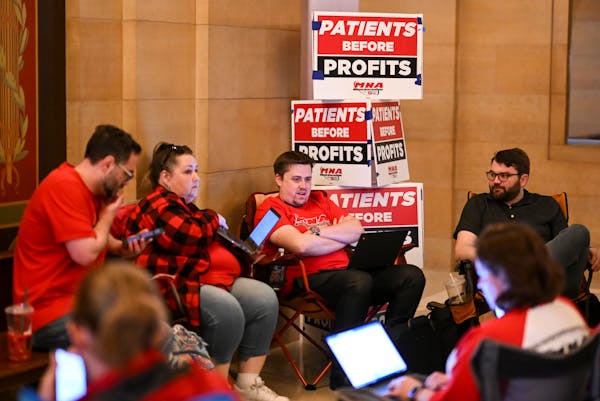Minnesota lawmakers passed a sweeping tax bill in the session's final days that includes a scaled-back version of the one-time rebates that lawmakers have been talking about for more than a year.
The state estimates more than 2.5 million Minnesota households are eligible for a rebate under the tax bill. It's been more than two decades since lawmakers last sent Minnesotans similar one-time rebate checks pitched by former Gov. Jesse Ventura.
Since then, tax filing technology has dramatically improved, and the state recently got some experience sending out direct payments through the COVID-19 front-line worker program. Some Minnesotans might not have to take any steps to get their rebate later this year.
"With the legislation now signed into law, we can begin implementing the tax rebate payments that were targeted to those who need them most," said Revenue Commissioner Paul Marquart.
Here are answers to some frequently asked questions about the size of the rebates, how they'll be handed out and how quickly they could arrive.
How much are the one-time rebates?
Single Minnesotans who had an adjusted gross income of up to $75,000 a year in tax year 2021 can get a one-time refundable tax credit of $260, and married joint filers with an income of up to $150,000 that year get $520.
Families who meet those income thresholds are also eligible for an additional $260 per child, up to three children, for a maximum of $1,300. The 2021 tax year covers the period after December 31, 2020, and before January 1, 2022.
What if I recently got a raise that puts me over the income limit?
As long as your income wasn't over $75,000 as a single filer in tax year 2021 or $150,000 for married couples you are still eligible for a rebate.
What if I've had a baby since 2021?
The number of dependents is also based off the 2021 tax year, even if you've had children in 2022 or 2023.
Are there other eligibility requirements?
To get a rebate, you had to live in Minnesota for at least part of the year in 2021 and filed an individual income tax return or a property tax refund.
What if I lived in Minnesota only part of 2021?
You are eligible for a reduced credit based on the percentage of the year you lived in Minnesota.
Do I need to apply for the rebate?
Taxpayers do not need to submit an application for their rebate. If you filed your taxes with the state and gave them direct banking information, the state will be sending the rebate directly to your bank accounts in the form of a direct deposit.
What if my banking information has changed since 2021?
The Department of Revenue will create an online portal for Minnesotans to update their banking information if they believe they are eligible for a rebate check.
I filed paper returns. Will I get a paper rebate check?
If the state doesn't have banking information from your tax return, officials will send a paper check to the address listed on your 2021 tax return.
When will the rebates arrive?
The state expects to start sending out the rebates to Minnesotans in early fall.
